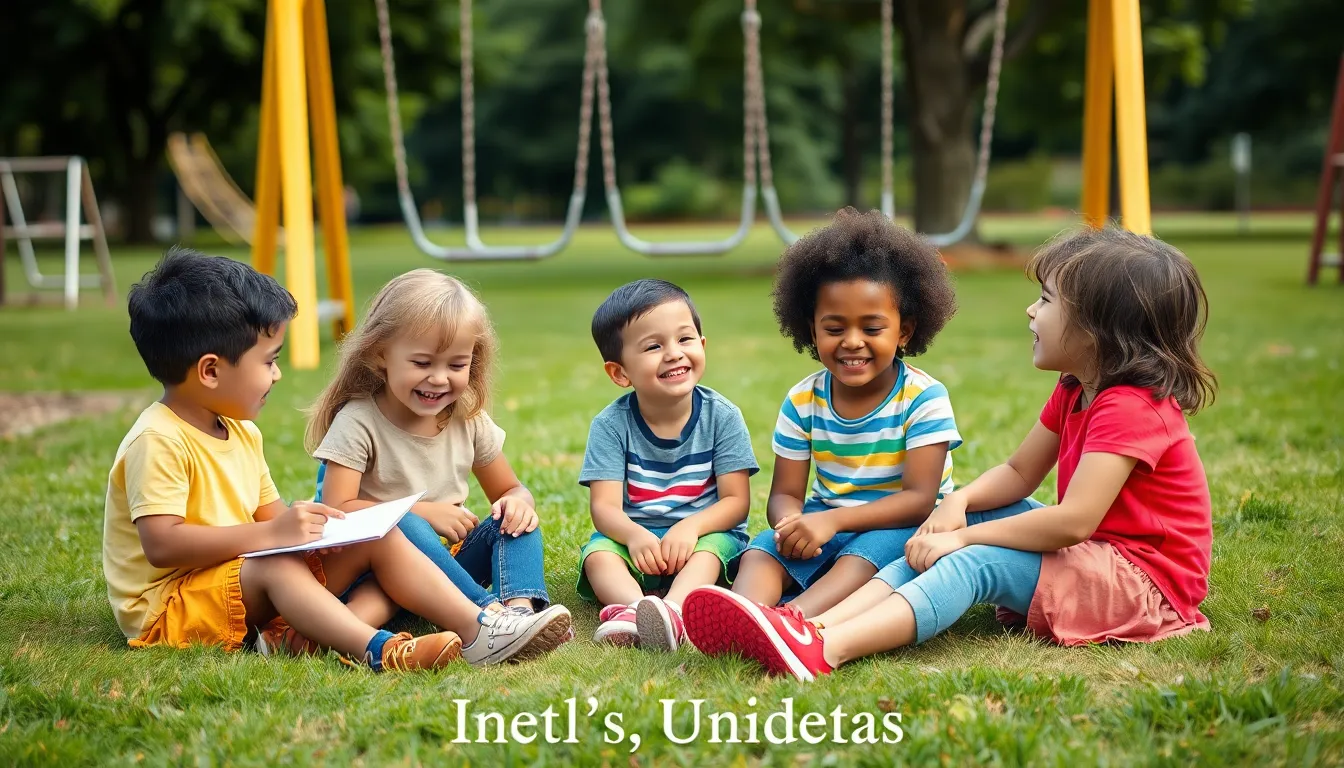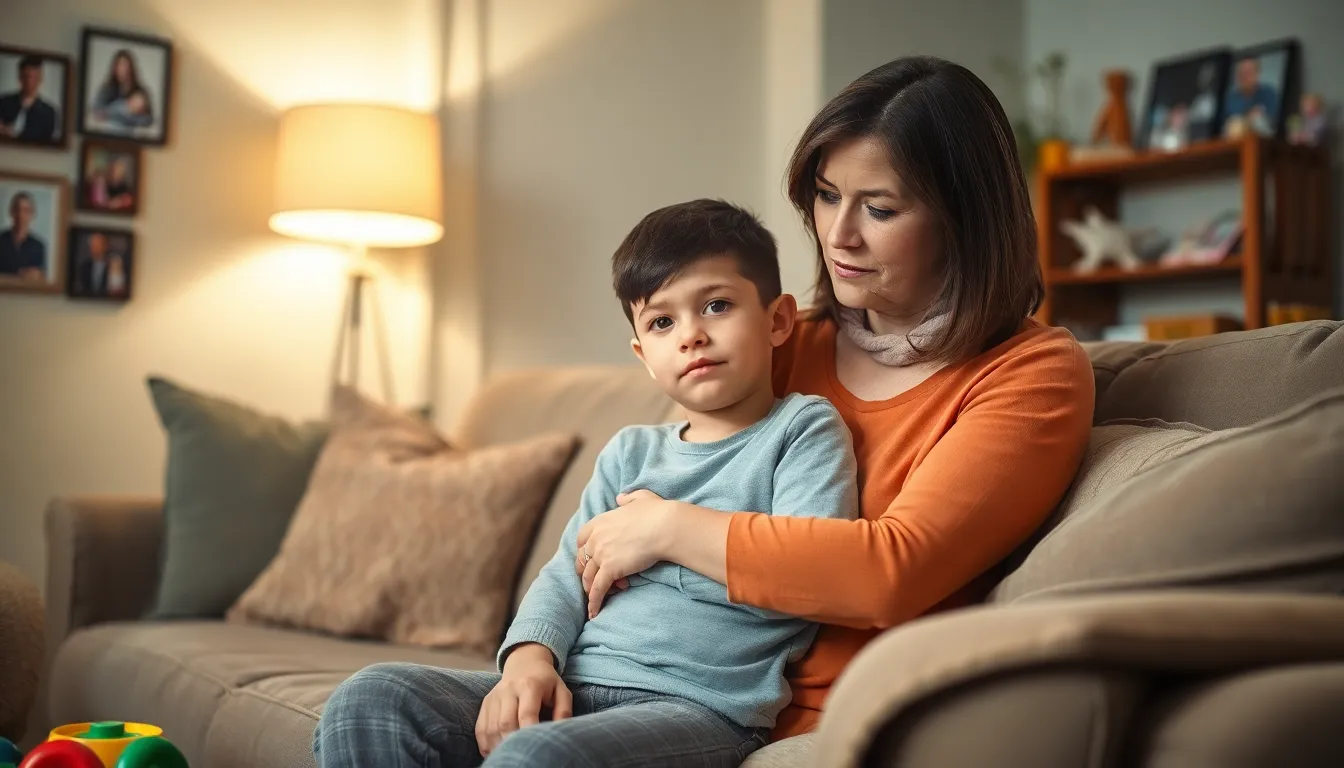Table of Contents
ToggleDivorce can feel like a rollercoaster ride, complete with unexpected twists and turns. Parents often wonder, “Will my child be okay after all this chaos?” It’s a valid concern, and while it might seem like the sky is falling, kids are surprisingly resilient. They bounce back faster than a rubber ball—especially when they have the right support.
Navigating this new chapter might seem daunting, but understanding how to help children adapt can make all the difference. With a sprinkle of love, a dash of communication, and maybe a few ice cream sundaes, parents can guide their little ones through this transition. So, let’s explore the strategies that can help reassure both parents and children that everything will turn out just fine.
Understanding Divorce and Its Impact on Children
Divorce significantly affects children, presenting a range of emotional and behavioral challenges. Understanding these aspects helps parents support their children effectively through this transition.
Emotional Reactions of Children
Children often experience a mix of emotions during a divorce, including sadness, anger, confusion, and anxiety. Sadness can manifest as tears or withdrawal, while anger may be directed at one or both parents. Confusion about the changes in family dynamics often leads to anxiety about the future. It’s important for parents to acknowledge these feelings, providing reassurance and a safe space for expression. Open communication about emotions helps children process their experiences, fostering resilience in the face of change.
Behavioral Changes in Children
Behavioral changes frequently accompany emotional shifts during a divorce. Many children exhibit regression, displaying behaviors typical of a younger age, such as clinginess or bedwetting. Others may act out, becoming defiant or disruptive. Some may retreat into themselves, opting to isolate rather than engage with peers. Parents should observe these changes closely, reacting with understanding instead of punishment. Encouraging engagement in activities that promote social interaction can alleviate some of these behavioral issues, helping children adjust more comfortably to their new reality.
Factors Influencing a Child’s Well-Being After Divorce

Several factors affect a child’s adjustment following a divorce. Parents should consider these elements to support their children effectively.
Age and Development
Age significantly influences how children perceive and process divorce. Younger children may struggle to understand why their family structure is changing, often experiencing feelings of insecurity. Preschool-aged children may express their confusion through play, while school-aged children might articulate feelings of anger or sadness. Adolescents typically possess a greater understanding of the situation, yet they may also experience intense emotions and stress. Parents should recognize these developmental stages and provide age-appropriate information and emotional support, helping children navigate their feelings with clarity and comfort.
Coping Mechanisms
Children develop various coping mechanisms to manage their emotions during a divorce. Some kids might withdraw or act out, while others find solace in friends or hobbies. Strong coping strategies include talking openly about their feelings, engaging in physical activities, or expressing emotions through creative outlets. Parents play a pivotal role by modeling healthy coping skills and encouraging children to share their thoughts. Addressing these coping strategies helps children feel validated and promotes resilience. Providing consistent reassurance and stability enhances a child’s ability to adjust to their new circumstances.
Strategies to Support Your Child
Supporting a child through divorce involves using specific strategies that address their emotional needs. Utilizing effective communication and creating stability promotes a smoother transition.
Open Communication
Encourage open dialogue about feelings. Parents should invite their children to express emotions without fear of judgment. Ensuring children feel heard significantly aids their emotional processing. Discussing the changes openly helps clarify misconceptions. It’s vital to ask questions, validating children’s concerns while providing clear, age-appropriate answers. Additionally, regular check-ins can establish a routine for communication. Creating a safe space fosters trust and encourages children to approach parents with future concerns.
Establishing Stability
Creating consistency in routines offers comfort to children facing divorce. Establishing regular schedules for school, activities, and family time decreases anxiety about changes. Familiarity provides reassurance during this uncertain period. Parents should also maintain core traditions, which can add a sense of normalcy. Furthermore, involving children in decision-making around new routines encourages a sense of control. Practicing predictability in daily life makes it easier for children to adapt to their new environment. Remembering to prioritize stability in their emotional and physical settings supports overall well-being.
The Role of Co-Parenting
Co-parenting significantly influences a child’s well-being after divorce. When parents collaborate effectively, children often adapt more smoothly to the changes in their lives.
Effective Co-Parenting Techniques
Implementing clear communication helps prevent misunderstandings and reduces stress for both parents and children. Establishing a consistent schedule allows kids to understand what to expect from each parent. Engaging in positive interactions during exchanges fosters a supportive environment. Being flexible with arrangements demonstrates cooperation and prioritizes the child’s needs. Utilizing tools like shared calendars can assist in managing important dates and activities. Prioritizing the child’s interests during discussions promotes a focus on their well-being.
The Importance of a Unified Approach
A unified approach ensures children feel secure amidst the changes of divorce. Presenting a consistent message about family dynamics reduces confusion. Both parents should agree on disciplinary methods and rules, reinforcing stability within the home. Collaborating on major decisions helps demonstrate a united front, promoting a sense of teamwork. Maintaining respect for each other during interactions sets a positive example for the children. Prioritizing cooperation over conflict creates a healthier emotional environment, which benefits everyone involved.
Seeking Professional Help
Professional help can offer valuable support when navigating the complex emotions of divorce. Therapists and counselors specialize in providing resources for children and parents.
Therapy and Counseling Options
Therapy can significantly benefit children adjusting to divorce. Options include individual therapy, where children explore feelings in a safe space. Group therapy also provides peer support, helping them share experiences and build connections. Parents can consider family therapy, which focuses on enhancing communication among family members. A therapist can guide discussions, promote understanding, and foster emotional healing. Many therapists also offer online sessions, increasing accessibility for families.
Resources for Parents
Numerous resources exist to support parents through divorce. Local support groups allow for shared experiences and strategies among parents facing similar challenges. Online platforms also offer parenting forums, providing a wealth of information and community support. Books and podcasts focusing on divorce and child well-being can equip parents with useful insights. Furthermore, schools often provide access to counselors who can assist in addressing children’s needs during this time. Utilizing these resources can empower parents to help their children navigate emotional challenges effectively.
Navigating a divorce can be challenging for both parents and children. With the right support and understanding, children can emerge from this experience stronger and more resilient. Prioritizing open communication and emotional stability fosters an environment where kids feel safe to express their feelings.
By engaging in enjoyable activities and maintaining consistent routines, parents can help their children adjust more smoothly to their new reality. Co-parenting effectively and seeking professional help when needed can further enhance a child’s emotional well-being. Ultimately, with love and patience, children can thrive even in the face of significant changes.




